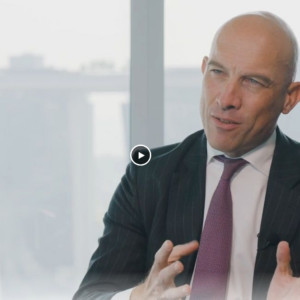Private View Blog: Investors must look beyond public markets to achieve true diversification

Access to private markets is being increasingly democratised for individuals and family offices, but many are not yet taking advantage
The rationale for investment diversification is well-understood: by investing across a broad range of assets, investors can better mitigate both risk and volatility, particularly during times of market turbulence. But how many investors are actually accessing the full spectrum of asset classes?
While large institutions have always been able to diversify their portfolios across a full suite of investment strategies and solutions – mixing public and private investments, real estate and commodities – it has been harder for private investors and family offices, who have tended instead to be restricted to a blend of publicly traded equities and bonds. A once-in-a-generation pandemic, a major geopolitical conflict and an ever-more apparent global ‘climate crisis’ may have shifted investor preferences about the particular equities and bonds they hold, but they have not – at least not yet – radically reshaped the structure of their portfolios.
This is in stark contrast to the world’s largest institutional investors, who are continuing to increase allocations to private markets. Create-Research recently estimated that defined benefit pension schemes have boosted their portfolio allocation to private markets from around 5 per cent 15 years ago to around 20 per cent today. Analysis from Private Equity International indicated that more than one-third of surveyed institutional investors raised their exposure to private equity in the first half of 2022, while more than 50 per cent indicated that their current exposure remains below their target levels.
Costly gap
For private investors, however, it has been a different story. According to a report by EY, European private investors’ allocation to private equity is only 2-3 per cent, leaving them inherently more exposed to the volatility and underperformance of public markets. This is potentially a costly gap.
One reason that large institutional shareholders are increasing allocations to private equity is that it opens up a significantly larger addressable market of investments, differentiated from those available in public markets. Public markets in the US and UK currently give access to around 8,200 companies: in 2021, there were almost five times this many medium to large private companies in the UK alone.
Historically, an IPO was the hallmark of success for a company. Today, private markets are established and have significant capital available. Consequently, younger companies in younger sectors (often ‘mid cap’ in terms of valuation) are more frequently choosing to stay private. As a result, investing in private companies is increasingly likely to mean investing in the companies of tomorrow.
Private equity funds do not just open up new investment opportunities: they also have a track record of delivering risk-adjusted returns through economic cycles. Long-term data suggests that US private equity funds have, net of fees, outperformed the S&P 500 and consistently generated double-digit annualised returns. What is more, they have achieved this with lower volatility: between 1994 and 2019, the Cambridge Associate Private Equity Index registered half the volatility of the S&P 500.
This outperformance is in part driven by private equity’s long-term focus, strong alignment of interests, and the active, hands-on ownership model.
Scared off
Lower volatility and higher returns are undoubtedly attractive investment propositions; so why are private investors not similarly diversifying their portfolios beyond public markets?
Private banks, family offices, and wealth managers serving high net worth private investors have sometimes been wary of locking their clients into closed-end funds with no or little liquidity. Some investors may also not be aware they can access private equity and still see it as the preserve of large institutions. High minimum investment sizes and a long lock-up period mean that access to private equity has typically been restricted to pension funds, endowment schemes and sovereign wealth funds.
But in fact, access to private markets is being increasingly democratised for individuals and family offices. For example, there are plenty of listed vehicles, such as listed private equity trusts, which enable shareholders to gain exposure to established private equity portfolios. Investors are able to buy as little as one share in these listed vehicles, which are traded on regulated public exchanges and provide an affordable entry point with the added benefit of daily liquidity.
Diversifying investments by asset class is an important consideration when constructing a portfolio to generate long-term returns in volatile economic conditions. Private equity managers today have significant operational and financial resources to react to changing market conditions and to support and improve businesses in a challenging environment. Listed private equity investors provide an opportunity for retail shareholders to invest in private companies through funds that have historically generated higher returns and lower volatility than public markets.
With options like these available, it begs the question: if private investors concentrate their investments in public equities and bonds, and overlook opportunities to invest in private markets, are they really sufficiently diversified?
Colm Walsh, managing director, ICG Enterprise Trust plc



